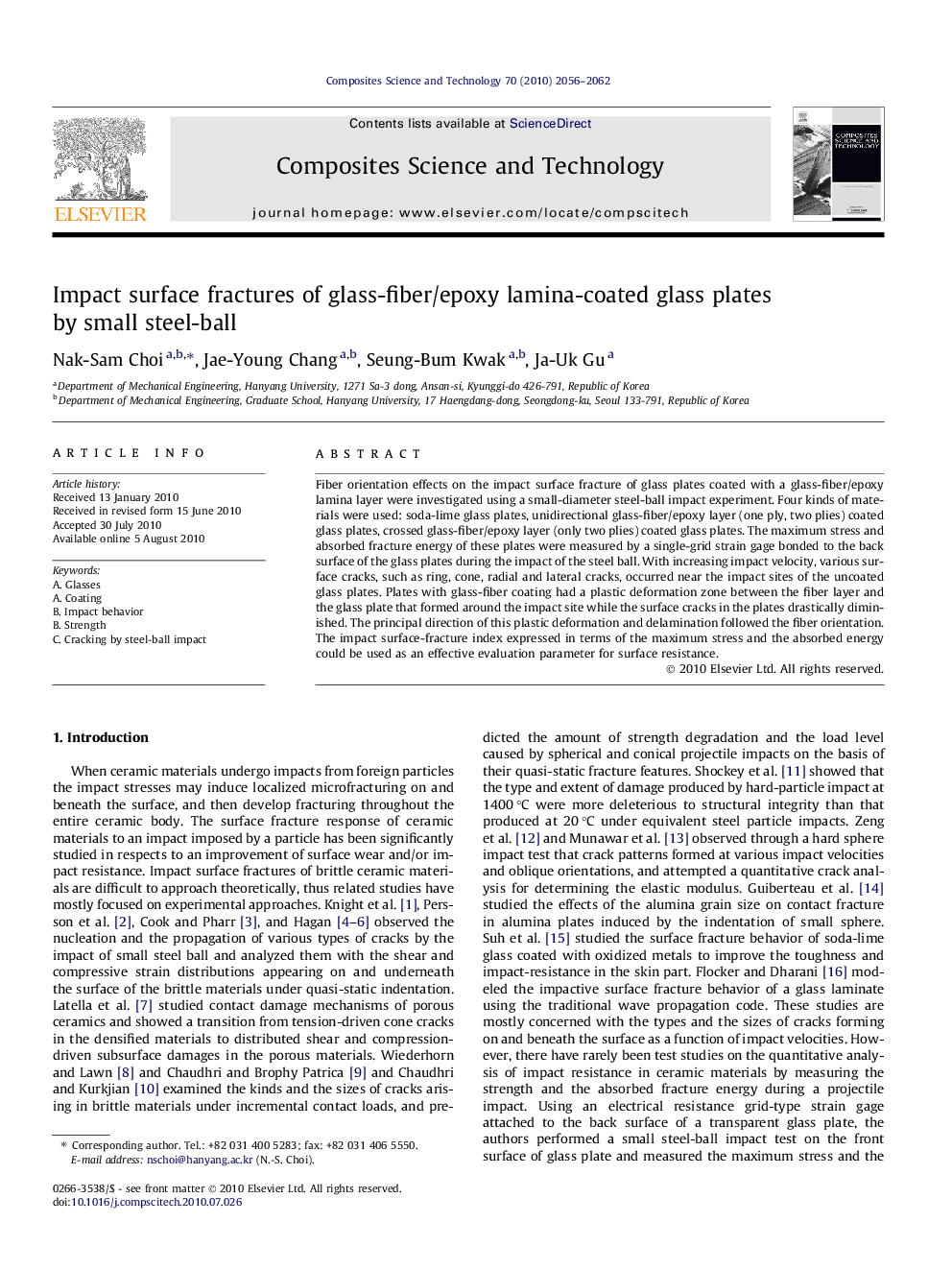| Article ID | Journal | Published Year | Pages | File Type |
|---|---|---|---|---|
| 821182 | Composites Science and Technology | 2010 | 7 Pages |
Fiber orientation effects on the impact surface fracture of glass plates coated with a glass-fiber/epoxy lamina layer were investigated using a small-diameter steel-ball impact experiment. Four kinds of materials were used: soda-lime glass plates, unidirectional glass-fiber/epoxy layer (one ply, two plies) coated glass plates, crossed glass-fiber/epoxy layer (only two plies) coated glass plates. The maximum stress and absorbed fracture energy of these plates were measured by a single-grid strain gage bonded to the back surface of the glass plates during the impact of the steel ball. With increasing impact velocity, various surface cracks, such as ring, cone, radial and lateral cracks, occurred near the impact sites of the uncoated glass plates. Plates with glass-fiber coating had a plastic deformation zone between the fiber layer and the glass plate that formed around the impact site while the surface cracks in the plates drastically diminished. The principal direction of this plastic deformation and delamination followed the fiber orientation. The impact surface-fracture index expressed in terms of the maximum stress and the absorbed energy could be used as an effective evaluation parameter for surface resistance.
